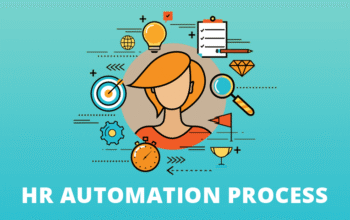Once considered the future of computing, cloud computing has become a critical business need for many companies. With the COVID-19 epidemic underway, many businesses have been forced to adapt to remote operations, including enterprise resource planning (ERP), as businesses had to adapt to remote operations.
However, while the transition to the cloud was necessary, traditional ERP systems’ limitations became apparent. These limitations, such as rigid processes and fragmented data, hindered companies’ ability to navigate change and innovate in an ever-evolving marketplace. It became clear that a simple “lift and shift” of an ERP system to the cloud would not be enough to meet the changing needs of businesses.
Moving forward, companies must adopt cloud-based ERP solutions and re-evaluate their systems and processes to align with their business goals in the digital age. This requires a digital backbone with an intelligent data core.
Workday represents a departure from traditional ERP systems as explained in “The Real SaaS Manifesto”. Unlike traditional ERP systems, Workday was built specifically to operate in a cloud environment from the beginning. The nature of ERP systems does not easily translate to a cloud-based architecture. While moving to a cloud platform can reduce operating costs, it does not resolve the challenge that organizations face in aligning processes with execution. A recent survey found that 63% of CEOs believe their processes and execution are too slow, and this gap is expected to widen.
VP of Product Development for Workday, Pete Schlampp, recognizes this challenge and believes that to operate at a faster pace, organizations need to move away from traditional ERP systems. He states, “You can’t be saddled with an enterprise resource planning (ERP) system of the past.” The concept and terminology of ERP need to evolve to make room for a new class of software that can bridge the gap between change and the ability of organizations to capitalize on it.
In this blog, we will answer frequently asked questions about cloud ERP and explore how Workday, as an enterprise management cloud solution, sets itself apart from traditional ERP systems.
What is Workday Financial Management?
Workday Financial Management is a cloud-based financial management solution offered by Workday, Inc. It is part of Workday, which provides organizations with a unified platform for managing core business processes like human resources, payroll, and financial management.
Workday Financials offers organizations a comprehensive solution to manage their financial operations and improve overall financial visibility and control. It includes features such as general ledger, accounts payable, accounts receivable, and cash management. It also offers robust financial reporting and analysis capabilities, including real-time financial reporting, budgeting, and forecasting.
One of the key benefits of Workday Financial Management is its seamless integration with other parts of the Workday. This provides organizations with a single source of truth for all their critical data, reducing the risk of data inaccuracies and errors. Additionally, because Workday Financial Management is built in the cloud, organizations can access the system from anywhere, at any time, providing them with increased flexibility and mobility.
Workday Financial Management also offers advanced security and compliance features to ensure that sensitive financial data is protected. It also integrates with third-party systems and applications, allowing organizations to extend their financial management capabilities even further.
Traditional ERP systems: what are they?
ERP, or Enterprise Resource Planning, is a term that refers to a suite of software applications that a business uses in order to run efficiently. It could encompass finance, human resources, supply chain, customer relationship management, or inventory management. However, not all ERP systems are created equal, and the differences can determine whether an ERP system is suitable for a modern business landscape.
A Brief History of ERP:
- In the 1960s, integrated software applications were primarily focused on manufacturing processes and were known as materials requirements planning (MRP).
- In the 1990s, research firm Gartner coined the term ERP to describe integrated applications focused on back-office operations such as finance and human resources.
- The term ERP II was introduced to describe the integration of add-on applications beyond core business operations, like the integration with customer relationship management data.
- With the rise of cloud computing in the late 1990s, ERP systems started transitioning from on-premise to cloud-based platforms in the mid-2000s.
A Shift in ERP:
- Gartner has concluded that enterprises are developing more integrated ERP capabilities instead of the traditional monolithic ERP solution due to the need for greater agility and the use of multiple data sources rather than a monolithic approach due to the demand for greater agility.
- Gartner advises businesses to adopt an ERP strategy that is more responsive and composable and to renovate or replace critical legacy systems.
- With the help of cloud-based software, businesses can focus on maximizing what the cloud platform has to offer in terms of business value.
Re-defining ERP:
- The monolithic approach to ERP is being challenged, and businesses are looking for more integrated and agile ERP capabilities.
- The future of ERP could be a system that is data-centric and customer-facing, which might deserve a new name.
Top Traditional ERP Systems –
There are many traditional ERP systems in the market, but some of the top ones include:
- SAP: One of the largest and most well-established ERP systems in the world, SAP offers a range of integrated applications for businesses of all sizes, including finance, human resources, supply chain, and customer relationship management.
- Oracle: Another large ERP provider, Oracle offers a range of integrated applications for various industries and has a strong focus on enterprise resource planning and supply chain management.
- Microsoft Dynamics: Microsoft Dynamics offers a range of ERP solutions for small to mid-sized businesses, including Dynamics GP and Dynamics 365 for Finance and Operations.
- Infor: A provider of ERP systems for various industries, Infor offers a range of applications for finance, supply chain, human resources, and customer relationship management.
- Epicor: A provider of ERP solutions for manufacturing, distribution, and service-based businesses, Epicor offers a range of integrated applications for finance, supply chain, and customer relationship management.
Workday Financial Management vs Traditional ERP Systems: Which is better?
The comparison between Workday Financial Management and traditional ERP systems is not a matter of which is better, as both have their strengths and weaknesses. In order for a business to make the right choice, it must first identify its specific needs and goals.
Workday Financial Management is a cloud-based solution, built from the ground up to deliver a modern and user-friendly approach to financial management. It offers a range of capabilities including accounts payable, accounts receivable, treasury and cash management, assets, billing, projects, expenses, and contracts. Workday’s real-time data architecture and intuitive user interface make it easier for financial teams to work collaboratively and make informed decisions.
Traditional ERP systems, on the other hand, are often on-premise solutions that have been around for many years. They provide a comprehensive set of financial management capabilities, including general ledger, accounts payable, accounts receivable, treasury, and cash management, but they can be complex and time-consuming to set up and maintain. Additionally, they often have a steep learning curve and require specialized technical skills to use.
One of the key differences between Workday Financial Management and traditional ERP systems is the way they are delivered. Workday is a cloud-based solution, which has the advantage of being accessible from anywhere with an internet connection, reducing the need for on-premise hardware and IT support. Additionally, Workday’s subscription-based model offers a flexible, scalable solution that can adapt to the changing needs of a business.
Another difference is that Workday has a more modern approach to financial management. Its real-time data architecture and intuitive user interface make it easier for financial teams to work collaboratively and make informed decisions. The platform also offers a range of collaboration and reporting tools to help organizations stay on top of their finances.
As a result, if you want to be more effective and efficient, Workday is a better option.
Workday Financial Management: Modules and Benefits
The Workday Financial Management system is made up of several modules that provide comprehensive financial management capabilities to organizations.
The Core Finance module is the foundation of the system and includes a general ledger, chart of accounts, journals, inter-company transactions, foreign currency support, and financial reporting.
Accounts Payable and Accounts Receivable modules are used for vendor and customer management respectively and include functionalities such as invoice processing, payment tracking, and cash application.
The Treasury/Cash module manages an organization’s cash and banking activities and includes cash forecasting, bank reconciliation, and investment management. The Assets module is used for the management of property, plant, and equipment and includes functionalities such as asset acquisition, depreciation calculation, and maintenance management.
The Billing module is used for customer billing and invoicing and includes invoice generation, payment processing, and revenue recognition. The Projects module is used for the management of project-related financial activities and includes project budgeting, time and expense tracking, and project financial reporting.
The Expenses module manages employee expenses and corporate credit card transactions and includes expense report creation, approval workflows, and reimbursement processing. Lastly, the Contracts module is used for the management of contracts and agreements and includes contract creation, tracking, and renewal management.
Conclusion
In conclusion, the choice between Workday Financial Management and traditional ERP systems depends on the specific needs and goals of a business. Workday Financial Management may be the better option for organizations looking for a modern, cloud-based solution with a focus on ease of use, collaboration, and real-time data. Traditional ERP systems, on the other hand, maybe a better choice for organizations that require a comprehensive set of financial management capabilities and are willing to invest in on-premise hardware and IT support.
We provide remote job placements in more than 40 countries, including the United States, the United Kingdom, and India, ERP Cloud Training is the only training institute offering Workday Financials & Workday Finance training exclusively. As well as offering instructor-led and self-paced courses, we offer valuable downloadable documents as well as 24/7 access to Tenant and Curriculum material.
In addition to this, you will receive hands-on support from Mary, the expert trainer, who has experience in ERP for 30 years and in Workday for 15 years. In Workday training, you will learn real-time live implementation strategies, and sample resumes for any Workday module will be provided. As part of our mission, we offer lifetime Job Support, including placement without interviews on internal projects, as well as external placements from our clients. There is a wide range of earnings for our remote full-time and contract jobs, ranging from 150 to 450 dollars per hour.
Our course gives you 10 years of experience in real-time implementation methodology. Enroll now and become an expert in Workday, and we provide cheat sheets with step-by-step instructions. We provide free recordings of all classes. We offer only Workday training, and our courses are designed for the job market.







